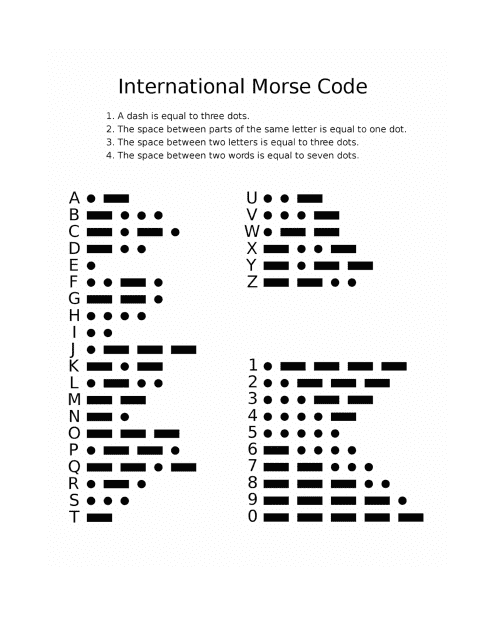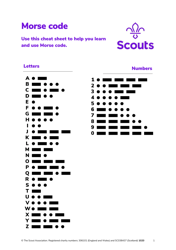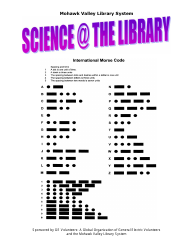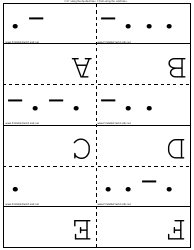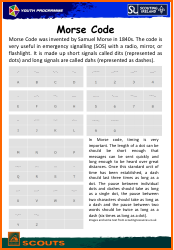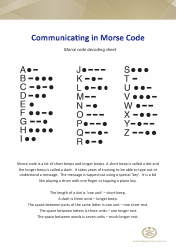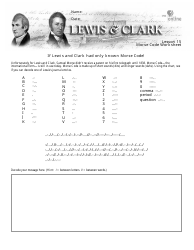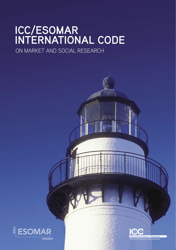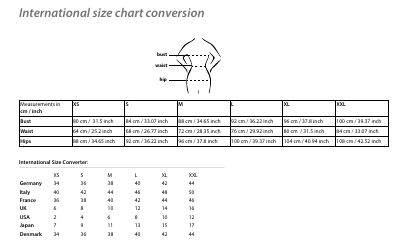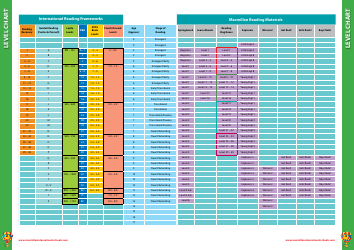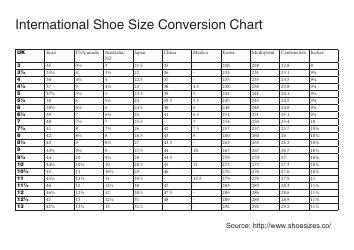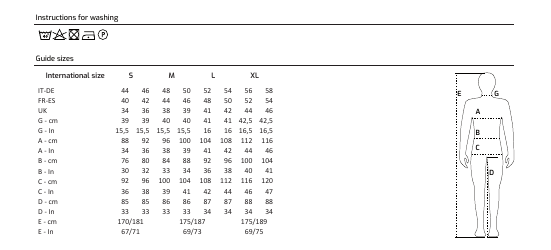International Morse Code Chart
The International Morse Code Chart is a system of letters, numbers, and symbols that represents text in a series of dots and dashes. It is used for communication purposes, especially in situations where spoken language may be difficult or impossible, such as in telegraphy or radio communication.
The International Morse Code Chart was developed and standardized by the International Telecommunication Union (ITU).
FAQ
Q: What is the International Morse Code?
A: It is a system of representing letters and numbers using a sequence of short and long signals, such as dots and dashes.
Q: How is the International Morse Code chart used?
A: It helps in translating letters, numbers, and special characters into Morse code and vice versa.
Q: How many characters can be represented in the International Morse Code?
A: It can represent 26 letters of the English alphabet, numbers 0-9, and some special characters.
Q: Can the International Morse Code be used internationally?
A: Yes, it is a standardized code that can be understood across different languages and countries.
Q: Is knowing International Morse Code still relevant today?
A: While not as widely used as in the past due to advancements in technology, it can still be useful in certain situations, such as emergency communication or amateur radio operators.
